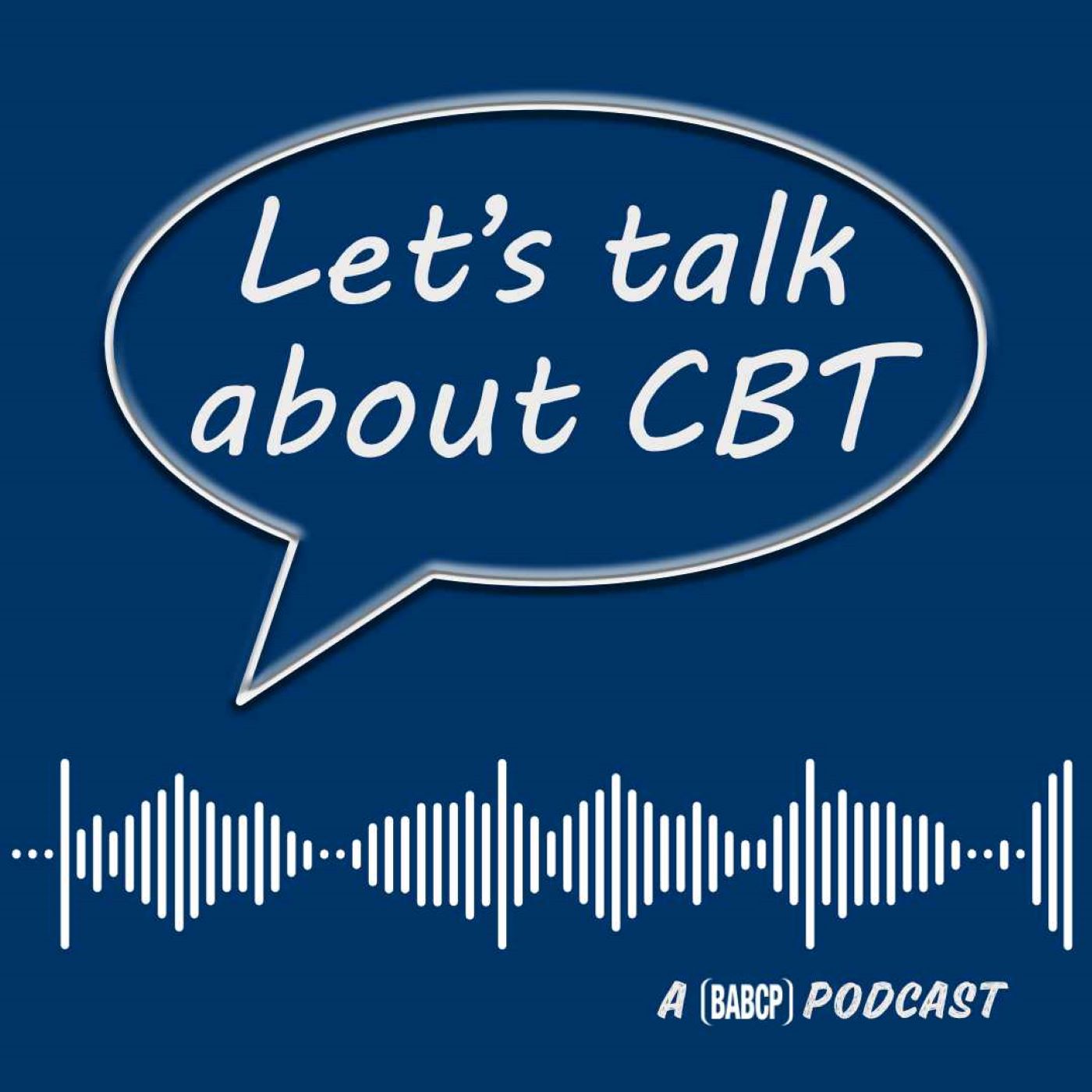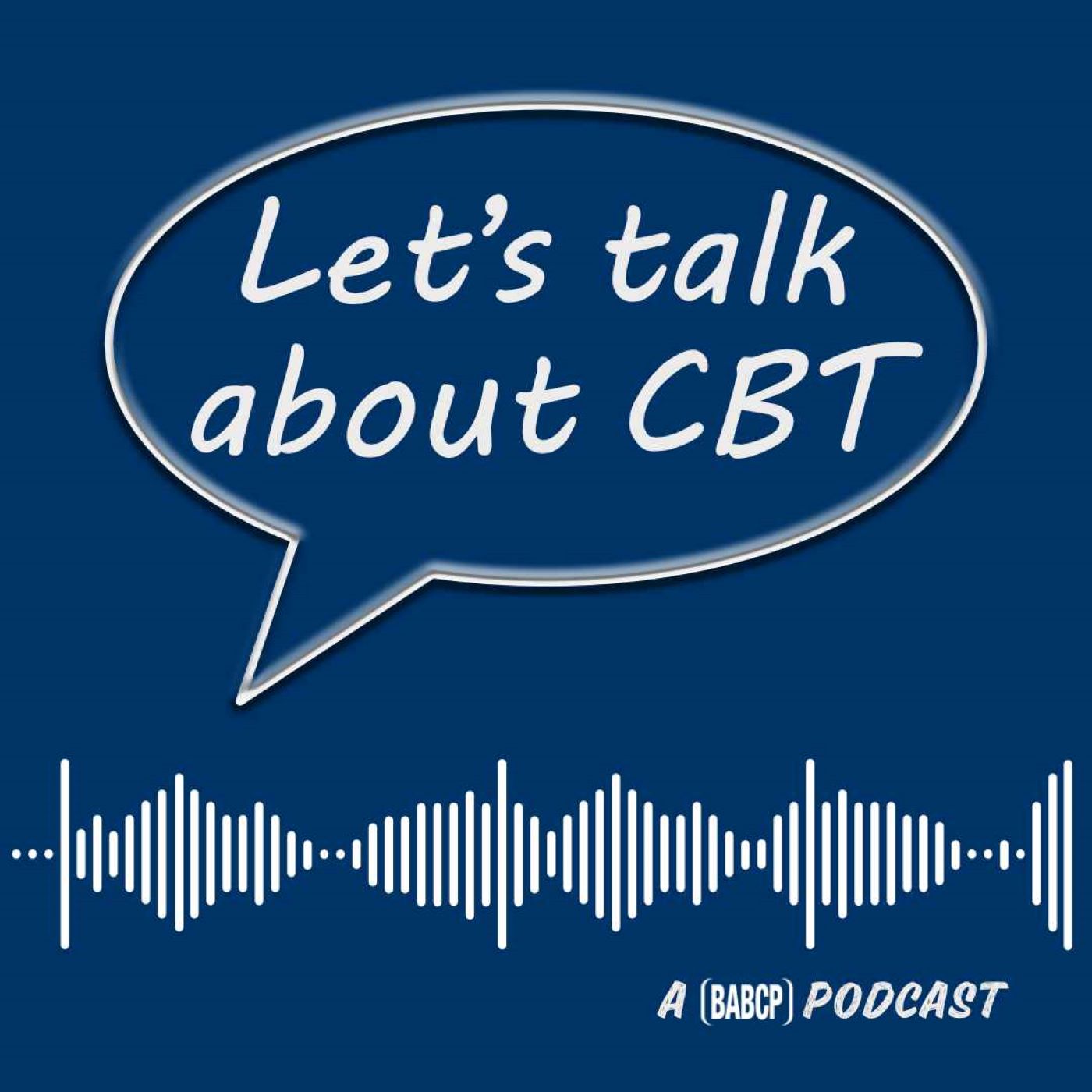Bonus Episode: What is SlowMo? And how can it help with paranoid thoughts?
Description
 In this bonus episode of Let's Talk About CBT, hear Dr Lucy Maddox interview Dr Tom Ward and Angie about SlowMo: digitally supported face-to-face CBT for paranoia combined with a mobile app for use in daily life.
In this bonus episode of Let's Talk About CBT, hear Dr Lucy Maddox interview Dr Tom Ward and Angie about SlowMo: digitally supported face-to-face CBT for paranoia combined with a mobile app for use in daily life.
Podcast episode produced by Dr Lucy Maddox for BABCP
Transcript
Dr Lucy Maddox: Hello and welcome to Let’s Talk about CBT, the podcast from the British Association for Behavioural and Cognitive Psychotherapies, BABCP. This podcast is all about CBT, what it is, what it’s not, and how it can be useful. In this episode, I’ll be finding out about an exciting new blended therapy, SlowMo, for people who are experiencing paranoia.
This digitally supported therapy has been developed over 10 years with a team of people including designers from the Royal College of Art in London, a team of people who have experienced paranoia. And a team of clinical researchers, including Professor Philippa Garety, Dr Amy Hardy and Dr Tom Ward.
The design of this intervention really prioritised the experience of people using the therapy in what’s called a design led approach. To understand more I video called Tom Ward, research clinical psychologist based in Kings College London, and I had a phone call with Angie, who’s experienced using the therapy. Here’s Angie’s story.
Angie: I mean, I’ve had psychosis for many years. About 20 years ago I was really poorly, I was in and out of hospital. Going back about 20 years ago they kept giving me different diagnoses and I expect everybody else had the same thing. Anyway, then I met a psychiatrist and I was with him for over 20 years until he retired. And he really helped me a lot, I was actually diagnosed with schizophrenia.
Part of me was really scared and another part of me was sort of relieved that I knew that I was dealing with. I get voices, sometimes I see or feel things that aren’t really there. But part of my diagnosis is I also get very depressed. And when I get very depressed, that’s when the voices are at their worst because I haven’t got the strength to sort of fight them off, if you like.
If I’m having a good day, then I can use the skills I’ve learnt in the past to not listen to the voices and to have a reasonably good day. If I’m having a bad day and it’s a duvet day, then that’s when I really suffer with the voices. Unless you can actually accept that you have this issue, and you actually accept that you need the help, it doesn’t matter what they do to help you, you’re just not going to take it on board.
Dr Lucy Maddox: Angie wanted some help, specifically with paranoid thoughts she was experiencing about people looking at her or laughing at her. She found out about the SlowMo trial and applied to be a part of it. And ended up being one of the very first people to try the therapy. Tom led on the delivery of therapy in the trial.
Dr Tom Ward: I’ve worked and have worked for the last couple of years trying to develop and test digital interventions for people experiencing psychosis. So I’ve been involved in developing interventions that help people who are experiencing distressing voices. And been involved in work in a therapy called avatar therapy and more recently I’ve been working with colleagues to develop an intervention designed to help people who are experiencing fear of harm from others, which we would sometimes refer to as paranoia.
Dr Lucy Maddox: In case listeners wonder what avatar therapy is could you just briefly say what that is?
Dr Tom Ward: So in avatar therapy, digital technology is used with the person to create a representation of the distressing voice that they hear. So we work with the person to create an avatar which has an image which matches the image the person has of their distressing voice. And which comes to sound like the voice that they hear. And we use this avatar direct in dialogue.
Very much with the rationale that many people who are experiencing distressing voices have relationships with their voice where they feel disempowered and lacking power and control. And we try to use the work with avatars and the dialogue with avatars to provide an opportunity for the person to reclaim power and control. And so we’re very much working directly with the experience in quite a potentially powerful way for people.
Dr Lucy Maddox: Could you tell me about the current project you’re working on, so SlowMo?
Dr Tom Ward: Yeah, so the first thing to say is that SlowMo stands for slow down for a moment. And so, it’s a therapy which is a targeted therapy for people who are experiencing paranoia. And it’s based in the idea that’s been popularised by Daniel Kahneman and other people that human thinking can be sort of thought about in terms of two different types of thinking. There’s fast thinking where we approach situations and we go with our first impression.
We go with our intuition and gut feeling and we don’t take time to think it through. And slow thinking is more around taking a step back from situations and weighing things up and considering different ways of looking at situations. So one of the things to say is that fast thinking is part of human nature, we all do it and in many different times in our lives.
But what we know from research into the experiences of people with psychosis is that people who worry about harm from other people, people who have significant paranoia can often be very likely to engage in this fast thinking. And find it difficult to feel safe in situations and to slow down and consider what else might be going on in the situation.
So the therapy is designed to help people build an awareness of this fast thinking which is a part of human nature but can be particularly difficult if we’re feeling unsafe. And it’s designed to support people to be able to slow down and feel safer in their lives. And managing situations so they can really engage and enjoy their lives in a way that perhaps in the past has been difficult.
Dr Lucy Maddox: Fast thinking I guess that’s something like you were saying that we all can get into a bit.
Dr Tom Ward: The first message that we try to get across within the therapy is that fast thinking is part of human nature, it’s natural. And there are times when thinking fast is actually very helpful for people, sometimes we need to react to situations, and we need to recognise where we are unsafe and there’s danger.
But in the context of when people are feeling unsafe throughout so much of their life, and in situations where perhaps the danger isn’t quite as much as the fear suggests it is, fast thinking can leave people feeling unsafe in situations where it might start to be a barrier to people living their lives.
And slow thinking is something that we’re all capable of, but all human beings find it difficult and people experiencing psychosis and worrying can find this difficult as well. But we’re really trying to find ways to support people to do that, to feel safe in their lives.
Dr Lucy Maddox: And how does the therapy work? What does it look like?
Dr Tom Ward: We would describe it as a blended digital therapy. And it’s important to explain what that means. The blending aspect of this is that we try to take the best of face-to-face therapy and the building of a relationship with someone. But we try to improve the therapy through using, through blending digital technology into what we do.
So the therapy involves eight face-to-face sessions, but each of these sessions is supported by an easy to use website effectively, an interactive website. So within a session, you’d be talking to the person or the person would be talking with the therapist but also interacting with a touchscreen laptop. And this provides information, it provides interactive ways that the person can build a picture of their own worries about other people or situations.
And really visualise what’s happening in a way that in psychological therapy we talk about a formulation. A formulation, an understanding of somebody’s difficulties. But the digital technology in SlowMo is trying to really bring the person into that process of understanding what’s going on and making it very engaging and interactive and visual and memorable for the person.
In order to try to support the person to make changes in their daily life, there’s also a mobile app that comes alongside the therapy, which is very much aimed at taking what the person has learnt in the therapy and applying it into their daily life.
Dr Lucy Maddox: Here’s Angie on what she remembers this digitally supported therapy being like.
Angie: You could choose pretty much where you wanted to do the therapy, you could have it at home, or you could have it in a café or somewhere else where you felt comfortable. So I did it in a café, a local café, with a lady called Alison. And what it consists of the clinician, Alison, she had a laptop. My heart sank originally because I thought oh no, I’m no good on computers. And I explained to her that I wasn’t very good on a computer.
And she was so lovely, so patient, she said, “I can do most of it for you.” So that was fine. What the therapy was it did what it says on the tin, really. It taught you to slow your mind down, and to break things up into little pieces, like for instance I used to be terrified of getting on the bus because I thought people were talking about me and laughing at me.
Dr


















